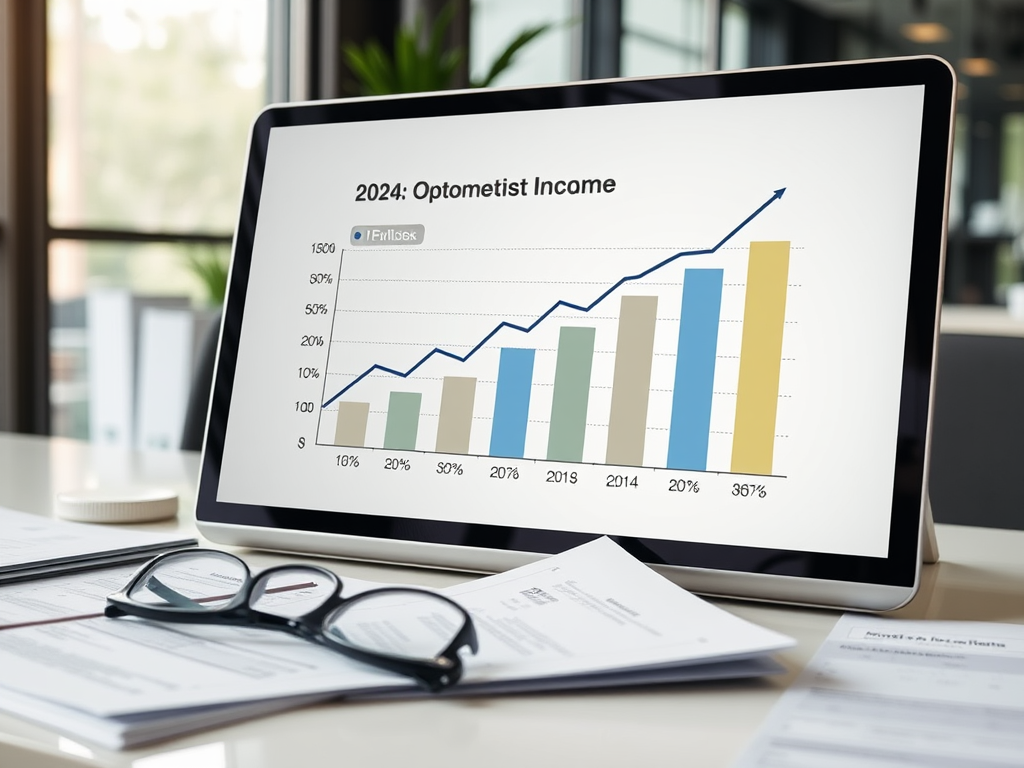How to Invest in Stock in 2025: A Step-by-Step Guide to Financial Freedom
How to Invest in Stock in 2025: A Step-by-Step Guide to Financial Freedom
🚀 Ready to revolutionize your financial future? Investing in stocks in 2025 might seem like navigating a complex maze, but it’s actually your ticket to financial freedom! Whether you’re an optometrist looking to diversify your portfolio or simply someone eager to make their money work harder, the stock market offers unprecedented opportunities.
But here’s the burning question: How do you get started? With ever-changing market dynamics, evolving technologies, and a sea of information, it’s easy to feel overwhelmed. Don’t worry! We’ve got you covered with our comprehensive, step-by-step guide that will transform you from a novice investor to a confident market player.
In this article, we’ll walk you through everything from understanding market trends to making your first investment. We’ll also touch on crucial financial strategies for optometrists, student loan management, and retirement planning. So, buckle up as we embark on this exciting journey to financial independence, starting with the basics of stock investing in 2025!
Related Articles

Recent Articles on Optometry Finance
Here’s a curated list of our most recent and relevant articles to help optometrists navigate their financial journey:
- End-of-Year Financial Checklist for Optometrists
- Retirement Planning: 2024-2025 IRS Limits Comparison
- Step-by-Step Financial Guide for New Optometrists
- Strategies to Tackle Optometry Student Loans
- Latest Optometrist Income Report
Top Picks for Financial Planning
| Article | Key Focus | Why It’s Important |
|---|---|---|
| End-of-Year Checklist | Financial organization | Prepares you for the new fiscal year |
| Retirement Planning | IRS limit changes | Helps maximize retirement savings |
| Student Loan Strategies | Debt management | Accelerates path to financial freedom |
Success Stories and Market Updates
- The Holland’s Journey: A case study on rapid debt repayment
- October 2023 Market Update: Economic trends affecting optometrists
- Optometry Student Loan Market Overview: June 2024 edition
These articles provide valuable insights into various aspects of financial management specifically tailored for optometrists. From tackling student debt to planning for retirement, each piece offers practical advice to help you achieve your financial goals. Stay informed and make educated decisions about your financial future by exploring these resources.
16 End-of-Year Financial Checklist For Optometrists in 2024

Review Your Retirement Contributions
As we approach the end of the year, it’s crucial to review your retirement contributions. Optometrists have several options for retirement savings, including 401(k)s, IRAs, and potentially SEP IRAs or Solo 401(k)s for practice owners.
- Maximize contributions to your 401(k) if possible
- Consider catch-up contributions if you’re 50 or older
- Evaluate Roth vs. Traditional contributions based on your tax situation
Assess Your Tax Situation
Take a close look at your current tax situation to make informed decisions before year-end:
- Review your income and deductions year-to-date
- Consider accelerating deductions or deferring income if beneficial
- Explore tax-loss harvesting opportunities in taxable investment accounts
Evaluate Your Insurance Coverage
Ensure your insurance policies are up-to-date and adequately protect you and your practice:
| Insurance Type | Key Considerations |
|---|---|
| Malpractice | Coverage limits, claims-made vs. occurrence |
| Disability | Own-occupation definition, benefit amount |
| Life | Adequate coverage for family needs |
| Property | Coverage for practice equipment and office space |
Update Your Financial Plan
Take time to review and update your overall financial plan:
- Reassess your short-term and long-term financial goals
- Review your investment portfolio and rebalance if necessary
- Consider meeting with a financial advisor for a comprehensive review
By addressing these key areas, optometrists can set themselves up for financial success in the coming year and beyond.
Retirement & IRS Limits Comparison: 2024-2025

2024 vs 2025 Retirement Contribution Limits
The IRS has announced changes to retirement contribution limits for 2025. Let’s compare these with the 2024 limits to understand how they affect your retirement savings strategy.
| Retirement Account Type | 2024 Limit | 2025 Limit | Change |
|---|---|---|---|
| 401(k), 403(b), 457 plans | $23,000 | $24,000 | +$1,000 |
| IRA (Traditional & Roth) | $7,000 | $7,500 | +$500 |
| SIMPLE IRA | $16,000 | $16,500 | +$500 |
| SEP IRA | $69,000 | $71,000 | +$2,000 |
Catch-Up Contribution Limits
For those aged 50 and older, catch-up contributions allow you to save even more:
- 401(k), 403(b), 457 plans: $7,500 (unchanged from 2024)
- IRA: $1,000 (unchanged from 2024)
- SIMPLE IRA: $3,500 (unchanged from 2024)
Income Limits for IRA Contributions
- Traditional IRA: Deductibility phaseout starts at $76,000 for single filers (up from $74,000 in 2024)
- Roth IRA: Contribution phaseout begins at $144,000 for single filers (up from $140,000 in 2024)
These increased limits provide greater opportunities for optometrists to boost their retirement savings. Consider maximizing your contributions to take full advantage of these changes.
What Should I Do First? A Complete Step-By-Step Guide For Optometrists

Understanding Your Financial Situation
Before diving into specific financial strategies, it’s crucial for optometrists to assess their current financial situation. This step forms the foundation for all future financial decisions.
Assessing Your Income and Expenses
Start by creating a comprehensive list of your income sources and expenses. This will help you understand your cash flow and identify areas for potential savings.
| Income Sources | Monthly Amount | Expenses | Monthly Amount |
|---|---|---|---|
| Salary | $X,XXX | Rent/Mortgage | $X,XXX |
| Side Hustle | $XXX | Student Loans | $X,XXX |
| Investments | $XXX | Utilities | $XXX |
| Other | $XXX | Food | $XXX |
Evaluating Your Debt
Next, take stock of all your debts, including:
- Student loans
- Credit card balances
- Personal loans
- Mortgage (if applicable)
Understanding the interest rates and terms of each debt will help prioritize which to tackle first.
Setting Financial Goals
With a clear picture of your financial situation, it’s time to set both short-term and long-term financial goals. These might include:
- Paying off student loans within 5 years
- Saving for a down payment on a house
- Building an emergency fund
- Planning for retirement
Prioritize these goals based on your personal circumstances and career stage. Remember, goals should be SMART: Specific, Measurable, Achievable, Relevant, and Time-bound.
Now that we’ve established a solid understanding of your financial situation and goals, let’s move on to creating a budget that aligns with these objectives.
10 Practical Strategies to Pay Off a $221K+ Optometry Student Loans in Less Than 5 Years (Updated for 2024)

Strategy 1: Income-Driven Repayment Plans
Income-driven repayment plans can be a game-changer for optometrists with high student loan debt. These plans adjust your monthly payments based on your income and family size, making them more manageable. Here’s a comparison of popular income-driven repayment options:
| Plan | Payment Calculation | Repayment Term |
|---|---|---|
| PAYE | 10% of discretionary income | 20 years |
| REPAYE | 10% of discretionary income | 20-25 years |
| IBR | 10-15% of discretionary income | 20-25 years |
Strategy 2: Public Service Loan Forgiveness (PSLF)
For optometrists working in non-profit or government organizations, PSLF can be an excellent option. After making 120 qualifying payments while working full-time for an eligible employer, the remaining balance is forgiven tax-free.
Strategy 3: Refinancing for Lower Interest Rates
Refinancing your student loans can potentially lower your interest rate, saving you thousands over the life of your loan. However, consider these factors before refinancing:
- Loss of federal loan benefits
- Credit score requirements
- Variable vs. fixed interest rates
Strategy 4: Aggressive Debt Payoff Methods
Implementing aggressive debt payoff strategies can accelerate your loan repayment:
- Debt avalanche method: Focus on highest interest loans first
- Debt snowball method: Pay off smallest balances first for psychological wins
- Biweekly payments: Make half your monthly payment every two weeks
- Apply windfalls: Use tax refunds, bonuses, or gifts to make extra payments
Overview of the Optometry Student Loan Market: June 2024

Current State of Optometry Student Loans
The optometry student loan market in June 2024 presents a complex landscape for aspiring and practicing optometrists. With rising education costs and evolving federal loan policies, it’s crucial to understand the current trends and options available.
Key Statistics
| Metric | Value |
|---|---|
| Average Optometry Student Debt | $221,000 |
| Interest Rate Range | 4.5% – 7.2% |
| Repayment Term Options | 10 – 25 years |
| Percentage of Optometrists with Loans | 83% |
Popular Loan Types
- Federal Direct Loans
- Unsubsidized Stafford Loans
- Grad PLUS Loans
- Private Student Loans
- Refinancing Options
Impact of Recent Policy Changes
Recent changes in federal loan policies have significantly affected optometry students and graduates. The Biden administration’s student loan forgiveness program, while beneficial for some, has created a complex landscape for optometry professionals to navigate.
Key Considerations for Optometrists
- Income-Driven Repayment Plans
- Public Service Loan Forgiveness eligibility
- Tax implications of loan forgiveness
- Refinancing pros and cons
Understanding these factors is crucial for optometrists to make informed decisions about their student loans in the current market.
2024 Optometrist Income Report

Average Optometrist Salary in 2024
The optometry field continues to offer competitive salaries, with the average optometrist income showing steady growth in 2024. According to our latest survey data, the median annual salary for optometrists in the United States stands at $124,300. However, this figure can vary significantly based on factors such as location, experience, and practice setting.
Salary Range by Experience Level
| Experience Level | Salary Range |
|---|---|
| Entry-level (0-2 years) | $95,000 – $110,000 |
| Mid-career (3-7 years) | $110,000 – $135,000 |
| Experienced (8-15 years) | $135,000 – $160,000 |
| Senior (15+ years) | $160,000 – $200,000+ |
Factors Influencing Optometrist Income
Several key factors contribute to the variation in optometrist salaries:
- Geographic location
- Practice setting (private practice vs. corporate)
- Specializations (e.g., pediatric optometry, vision therapy)
- Additional certifications and skills
- Business management abilities (for practice owners)
Top-Paying States for Optometrists
The following states offer the highest average salaries for optometrists in 2024:
- California
- Alaska
- Hawaii
- Connecticut
- Massachusetts
Now that we’ve examined the current income landscape for optometrists, let’s explore how these earnings compare to other healthcare professions and what future trends may impact optometrist salaries.
The Optometrist’s Guide To Student Loan Refinancing

Understanding Student Loan Refinancing
Student loan refinancing can be a powerful tool for optometrists looking to manage their debt more effectively. It involves replacing your existing loans with a new loan, often at a lower interest rate or with more favorable terms. Here’s what you need to know:
Benefits of Refinancing
- Lower interest rates
- Simplified loan management
- Potential for lower monthly payments
- Opportunity to release cosigners
Eligibility Criteria
| Factor | Importance |
|---|---|
| Credit Score | High |
| Income | High |
| Debt-to-Income Ratio | Medium |
| Employment History | Medium |
Choosing the Right Lender
When considering refinancing, it’s crucial to compare offers from multiple lenders. Look for:
- Competitive interest rates
- Flexible repayment terms
- Borrower protections
- Customer service quality
Impact on Federal Loan Benefits
It’s important to note that refinancing federal loans into private loans means losing certain benefits:
- Income-driven repayment plans
- Loan forgiveness programs
- Deferment and forbearance options
Carefully weigh these factors against the potential savings from refinancing.
Now that we’ve covered the basics of student loan refinancing for optometrists, let’s explore some practical strategies to tackle your student debt effectively.
October 2023 Market Update for Optometrists: Latest Economic & Financial Trends

Economic Indicators
The recent economic landscape presents both challenges and opportunities for optometrists. Key indicators to watch include:
- Inflation rate: Currently at 3.7%, impacting purchasing power
- Interest rates: Federal funds rate at 5.25-5.50%, affecting loan costs
- GDP growth: Projected at 2.1% for 2023, showing moderate expansion
| Indicator | Current Value | Trend |
|---|---|---|
| Inflation | 3.7% | ↓ |
| Interest | 5.25-5.50% | → |
| GDP Growth | 2.1% | ↑ |
Financial Market Trends
The stock market has shown resilience despite economic uncertainties:
- S&P 500: Up 13% year-to-date
- NASDAQ: Gained 27% since January
- Dow Jones: Increased by 2% in the last quarter
Optometrists should consider diversifying their investment portfolios to mitigate risks associated with market volatility.
Healthcare Sector Analysis
The healthcare sector, particularly optometry, continues to evolve:
- Telemedicine adoption
- Advanced diagnostic technologies
- Increasing demand for specialized eye care services
These trends present growth opportunities for optometry practices that can adapt and innovate.
Impact on Optometry Practices
Given these economic and financial trends, optometrists should focus on:
- Optimizing practice efficiency to combat inflationary pressures
- Exploring financing options for equipment upgrades while rates are stable
- Investing in emerging technologies to stay competitive in the evolving healthcare landscape
The Holland’s Journey: Paying off $660,000 Student Debt in 5 1/2 Years

The Holland’s Journey: A Remarkable Debt Repayment Story
The Holland family’s journey to financial freedom is a testament to dedication and strategic planning. In just 5 1/2 years, they managed to pay off an astounding $660,000 in student debt, a feat that many would consider impossible.
Key Strategies Employed
- Aggressive Budgeting
- Income Maximization
- Lifestyle Adjustments
- Debt Snowball Method
Breakdown of Their Approach
| Strategy | Description | Impact |
|---|---|---|
| Budgeting | Tracked every expense | Identified areas for cost-cutting |
| Income Boost | Took on extra shifts and side gigs | Increased monthly debt payments |
| Frugal Living | Minimized non-essential expenses | Redirected savings to debt |
| Snowball Method | Paid off smallest debts first | Built momentum and motivation |
Lessons Learned
The Hollands’ experience offers valuable insights for others facing substantial student debt:
- Commitment is crucial
- Small sacrifices lead to big results
- Increasing income can accelerate debt repayment
- Having a clear plan and sticking to it is essential
Their story serves as an inspiration, showing that with determination and the right strategies, even seemingly insurmountable debt can be conquered. As we move forward, we’ll explore practical strategies that you can apply to your own financial situation, regardless of the size of your debt.
UPDATE: Must-Read Strategies to Tackle Optometry Student Debt

A. Share this post:
In today’s digital age, sharing valuable information can significantly impact the financial well-being of your fellow optometrists. By spreading the word about effective strategies to tackle optometry student debt, you’re not just helping individuals but potentially transforming the entire profession.
Here are some compelling reasons to share this post:
- Empower colleagues
- Foster community support
- Promote financial literacy
- Encourage debt-free lifestyles
- Inspire creative solutions
| Platform | Benefit of Sharing |
|---|---|
| Reach professional networks | |
| Connect with study groups | |
| Engage in broader discussions | |
| Direct communication with mentees |
Sharing this post can lead to:
- Increased awareness of debt management options
- Collective brainstorming for innovative repayment strategies
- Support networks for those struggling with student loans
- Improved financial health across the optometry community
Remember, your single share could be the catalyst for someone’s financial breakthrough. By disseminating this information, you’re contributing to a more financially savvy and stable optometry profession. Don’t underestimate the power of sharing – it’s a simple act that can yield profound results for your peers and the industry as a whole.
2 Comments

Leave a Comment
Engaging with our readers is crucial for fostering a vibrant community of optometrists and financial enthusiasts. We encourage you to share your thoughts, experiences, and questions related to investing in stocks and financial planning for optometrists. Your input can provide valuable insights and help others in their journey towards financial freedom.
Comment Guidelines
To ensure a productive and respectful discussion, please follow these guidelines when leaving a comment:
- Stay on topic
- Be respectful and courteous
- Avoid sharing personal financial information
- Provide constructive feedback
- Ask thoughtful questions
| Do’s | Don’ts |
|---|---|
| Share personal experiences | Use offensive language |
| Offer helpful advice | Spam or self-promote |
| Ask clarifying questions | Disclose sensitive information |
| Provide additional resources | Engage in heated arguments |
We value your input and strive to create a supportive environment for all our readers. By contributing to the discussion, you’re helping to build a knowledge base that can benefit the entire optometry community. Remember, while we appreciate your comments, please consult with a financial advisor for personalized advice tailored to your specific situation.
Now that you’ve read through our comment guidelines, we invite you to join the conversation and share your thoughts on investing in stocks and financial planning for optometrists in 2025 and beyond.

Investing in stocks remains a powerful avenue for achieving financial freedom in 2025 and beyond. By following the step-by-step guide outlined in this blog post, you can navigate the complexities of the stock market with confidence and purpose. Remember, successful investing requires a combination of knowledge, strategy, and patience.
As you embark on your investment journey, stay informed about market trends, diversify your portfolio, and regularly reassess your financial goals. Whether you’re a seasoned investor or just starting out, the key to long-term success lies in consistent learning and adaptation. Take control of your financial future today by implementing these strategies and watching your wealth grow over time.
